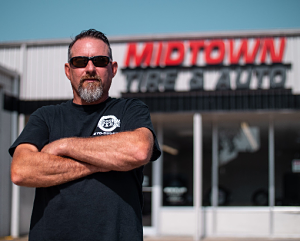(NEW ORLEANS) — During the ongoing massive manhunt for 10 inmates who escaped from a New Orleans jail last week, authorities say the use of facial recognition cameras run by a private organization helped lead to the recapture of one of the fugitives — even as the police department has come under scrutiny by critics from civil rights organizations to conservative politicians over its use of the technology.
Earlier this week, New Orleans Police Department Superintendent Anne Kirkpatrick told ABC News that facial recognition cameras maintained by Project N.O.L.A. had been used in the New Orleans manhunt despite the fact that she recently ordered a pause in the automated alerts her officers had been receiving from the group, which operates independently of the police department.
Kirkpatrick recently told The Washington Post she ordered the alerts to officers turned off until she is “sure that the use of the app meets all the requirements of the law and policies.”
Citing the New Orleans Police Department’s partnership with Project N.O.L.A., the American Civil Liberties Union said in a statement it is believed to be the first known widespread effort by a major American law enforcement agency to use artificial intelligence technology to identify suspects in an assortment of crimes across the city.
In a statement, the ACLU said the use of live facial recognition raises constitutional and privacy issues and “is a radical and dangerous escalation of the power to surveil people as we go about our daily lives.”
Critics of the New Orleans Police Department’s use of facial recognition cameras said that the average citizen should understand that they are not opting in or are being made aware that they are being scanned by the cameras.
“Facial recognition technology poses a direct threat to the fundamental rights of every individual and has no place in our cities,” Alanah Odoms, executive director of the ACLU of Louisiana, said in a statement about the city’s partnership with Project N.O.L.A. “We call on the New Orleans Police Department and the City of New Orleans to halt this program indefinitely and terminate all use of live-feed facial recognition technology.”
Some Republicans in Congress also opposed the unchecked use of the technology, most notably Reps. Jim Jordan of Ohio, Andy Biggs of Arizona, Warren Davidson of Ohio, Thomas Massie of Kentucky and Sens. Mike Lee of Utah and Steve Daines of Montana.
In a March 27, 2025 letter to Kash Patel, who was then acting director of the federal Bureau Alcohol, Tobacco, Firearms Explosives, Biggs, the chairman of the House Subcommittee on Crime and Federal Government Surveillance, and Davidson raised concerns over news reports indicating the ATF utilized facial recognition technology to identify gun owners. “The Subcommittee has concerns about ATF’s use of facial recognition and Al programs and the effects that its use has upon American citizens’ Second Amendment rights and rights to privacy,” the lawmakers wrote in their letter, requesting documents on policies and training in the use of facial recognition technology.
Democrats, including Rep. Zoe Lofgren of California and Sen. Ron Wyden of Oregon have also joined bipartisan efforts to curtail the use of such surveillance.
How authorities are using live facial recognition
The 10 inmates escaped from the Orleans Justice Center in New Orleans on May 16, officials said. Five of the fugitives have since been recaptured, leaving five others, including three charged with murder, still on the run as of Thursday afternoon.
Kirkpatrick told ABC News this week that one of the fugitives was caught and another narrowly got away after live facial recognition cameras operated by Project N.O.L.A. located them while scanning crowds in the French Quarter.
Bryan Lagarde, executive director of Project N.O.L.A., told ABC News that after being notified of the jailbreak on Friday, state police gave his group a list of the escapees.
“We put that into our facial recognition. It took approximately four minutes to do that and within, literally, less than a minute later we started tracking two of the escapees,” Lagarde said.
He said the information about fugitive Kendall Myles and another escaped inmate, who he said is facing attempted second-degree murder charges, was sent to state police investigators who confirmed the two men were part of the jailbreak.
“Then they immediately went out to the French Quarter, which is where we were tracking them walking down Bourbon Street,” Lagarde said.
Myles was arrested after police found him hiding under a car. The second escapee, however, managed to get away.
“I’m sure they knew there were cameras because they were walking around with their faces held down and things like that. All it takes is just a second for them to look up and then there’s facial recognition,” Lagarde said.
Citing the ongoing investigation, Lagarde declined to say if his cameras have located any of the other escapees.
Group operates 200 facial recognition cameras in New Orleans
Largarde said that his organization has been using live facial recognition cameras in New Orleans for the past two years.
In response to potential privacy concerns, Lagarde said, “As far as the facial recognition is concerned, it’s scanning your face, my face, everyone’s faces. If you’re wanted and we know that you’re wanted, you’re going to be in trouble. If you are not wanted, its going to instantly disregard your face and just move on to the next person.”
He said his group maintains about 5,000 cameras in New Orleans, including 200 that have facial recognition capabilities. He said the facial recognition cameras not only scan faces, but also clothing, vehicle and license plates.
“We work a very large number of the major crimes here in New Orleans: Homicides, shootings, stabbings, home invasions, rapes, robberies all the way down to the thefts and the burglaries,” Lagarde said.
Project N.O.L.A. works with the New Orleans Police Department and the Louisiana State Police but does not have an official contract with either agency, officials said.
Before the manhunt, the New Orleans police had appeared to distance themselves from Project N.O.L.A..
The police department “does not own, rely on, manage, or condone the use by members of the department of any artificial intelligence systems associated with the vast network” of Project N.O.L.A.’s cameras, a spokesman for the police department agency said in a statement to The Washington Post.
Kirkpatrick, the New Orleans police superintendent, said her agency has operated surveillance cameras across the city, many in the entertainment districts, but none of them have facial recognition capabilities. According to the New Orleans Police & Justice Foundation, the city has about 3,600 police operated cameras across the city.
What local laws say
While the city has an ordinance on the use of facial recognition technology, Kirkpatrick said there are exceptions to the rules.
“Sometimes, people think that we have a total ban on the use of facial recognition and that is not quite accurate,” Kirkpatrick said. “There are exceptions, and I think that this one would meet the exception of those ordinances.”
According to the city ordinance, “Evidence obtained from facial recognition alone shall not be sufficient to establish probable cause for the purpose of effectuating an arrest by the NOPD or another law enforcement agency. The source of the image and the underlying reasons for the requested use of facial recognition systems as an investigative lead shall be documented in a police report.”
The ordinance says “facial-recognition technology, shall not be used as a surveillance tool.” But the ordinance also states that “nothing in this section shall prohibit NOPD from requesting the use of facial recognition technology in the investigation of the prior occurrence of the following significant crimes as defined in Louisiana Revised Statute,” including murder, manslaughter, solicitation of murder, first-degree robbery, drive-by shootings and carjackings.
“They had my permission, that’s for sure,” Kirkpatrick said of the use of facial recognition technology in the manhunt.
Three of the five escaped inmates still being sought on Friday have been have been charged with murder or attempted murder, including one who was convicted in a double homicide, authorities.
A ‘dragnet system?’
The Washington Post investigation published this week reported that New Orleans police were using Project N.O.L.A.’s network of facial recognition cameras to monitor the streets for wanted suspects over the past two years in ways that appeared “out of step” with the local ordinance.
In the interview with ABC about the manhunt, Kirkpatrick said that Project N.O.L.A. is a “useful partner” but stressed that it is not law enforcement and is not bound by the local ordinance, raising issues of accountability about Project N.O.L.A. and the data it collects on ordinary citizens who are being surveilled in this untargeted manner.
“I’m very supportive of any technology that we can use to bring violent people back in, and then we can deal with the issues later, but we actually operate within the boundaries of the law,” she said. “As long as it’s constitutional, ethical, we’re going to stay within the boundaries. But this is a bigger topic and discussion, mainly for our politicians to decide what kind of laws they want.”
Other police departments across the country have faced questions over their use of the technology.
The use of facial recognition software by U.S. businesses has also grown sharply in recent years, analysts and privacy advocates told ABC News.
The uses range from tech companies securing personal devices and retailers scanning for potential shoplifters to e-commerce giants tracking delivery drivers. Retailers are also using facial recognition scanning on shoppers to adjust pricing in stores.
Companies contend that the technology helps them achieve a safe and efficient operation, benefiting consumers and employees alike. Critics say the powerful tool encroaches on the privacy of everyday people, risking undue punishment or discrimination, the experts said.
Jake Laperruque, deputy director of the Center for Democracy & Technology’s Security and Surveillance Project, said facial recognition cameras are an “unproven, error-prone tool.”
“This is the first documented case in the U.S. of police using untargeted facial recognition, which countries like China employ to track people across cities and surveil their Uyghur citizens,” Laperruque said in a statement to ABC News regarding New Orleans’ police use of the technology. “This kind of dragnet system belongs in a dystopian sci-fi movie, not in American cities. Average pedestrians shouldn’t have to worry that untested AI technology will set off alarm bells and send police after them.”
One of the key issues of facial recognition and AI is that studies have shown that it can be racially biased and is particularly error prone with people of color, older people and women.
“There’s been error rates between 80 and 90%. That means nine out of every ten times that the system says, ‘Hey, here’s someone from our watch list,’ it’s actually a false alarm,” Laperruque said of the use of these cameras as untargeted or real-time surveillance tools based on pilot programs run in the United Kingdom.
“Facial recognition could be used to catalog attendees at a protest or political rallies of any affiliation, individuals going to a church, people visiting a medical clinic, or an array of other sensitive activities,” Laperruque told ABCNews.
He added, “Given these risks it’s no surprise that surveillance reform in general — and placing guardrails on facial recognition in particular — has support from across the political spectrum, including some of the most progressive and conservative members of Congress — just last month at a Congressional hearing conservative members of Congress highlighted the dangers of facial recognition and other unchecked forms of surveillance.”
Copyright © 2025, ABC Audio. All rights reserved.











